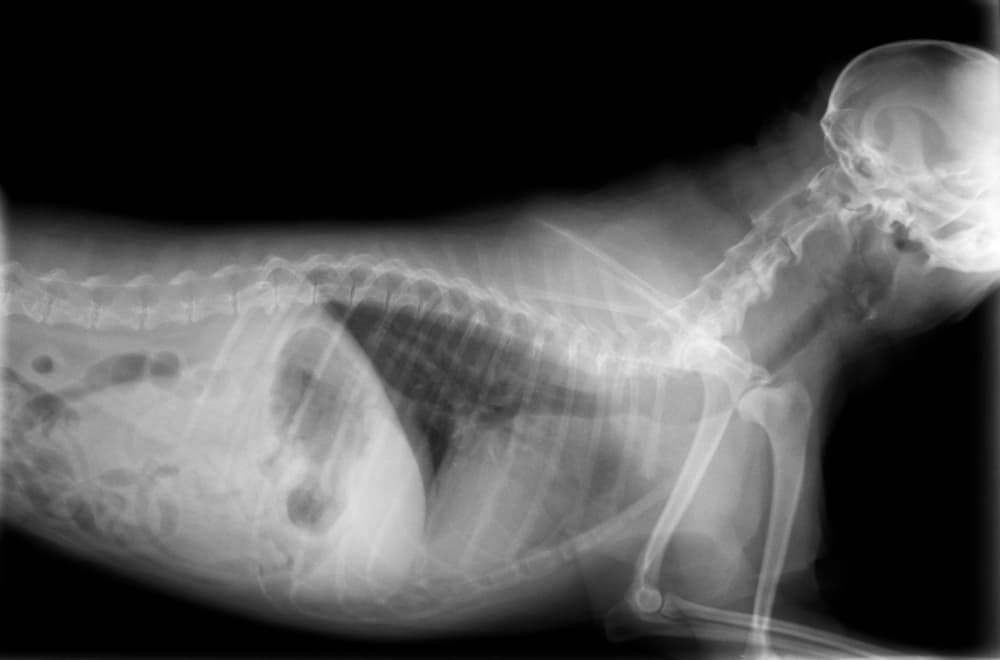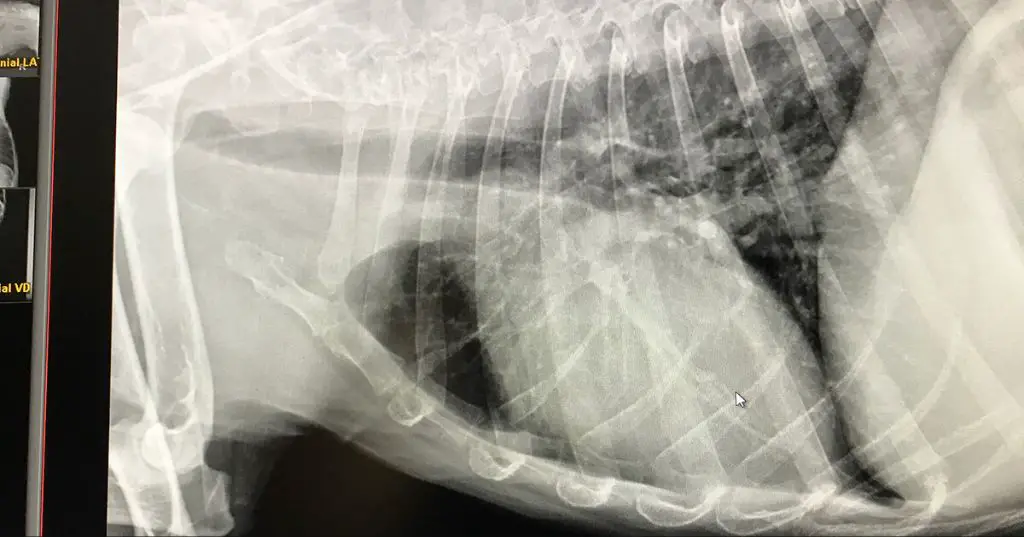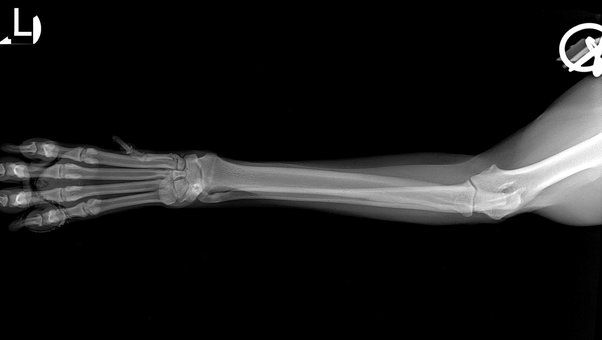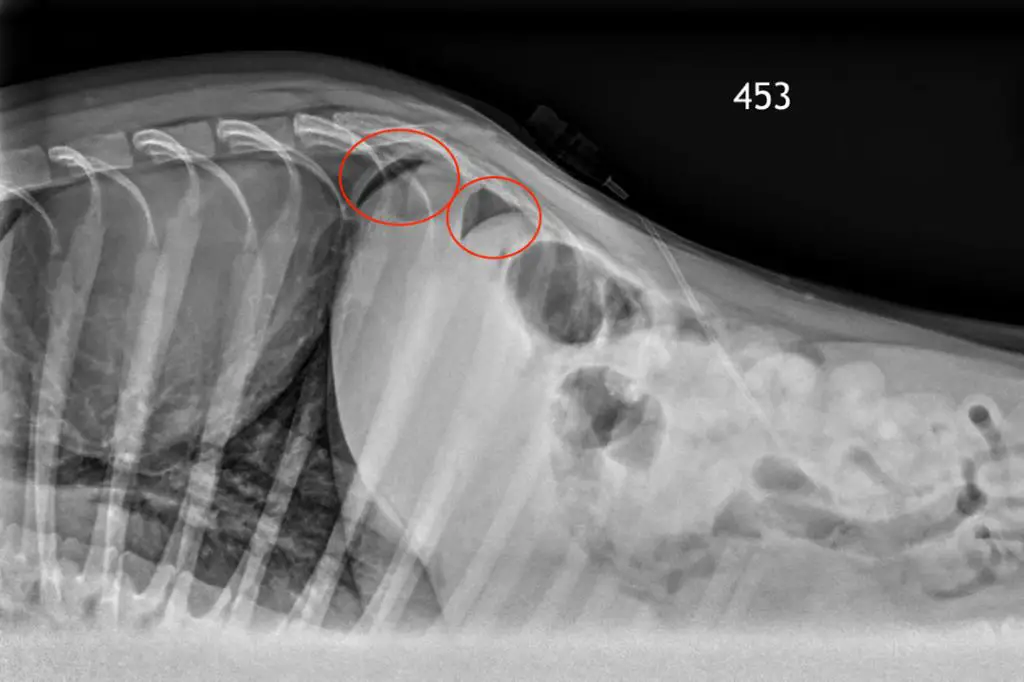Introduction
X-rays can be a valuable diagnostic tool for detecting issues in dogs that may not be apparent from a physical exam alone. Like humans, dogs can benefit from x-rays to see inside their bodies and identify abnormalities or problems. This article provides dog owners with a comprehensive overview of canine x-rays, including the common reasons they are performed, what the process entails, the different types of dog x-rays available, risks and limitations, costs, how to prepare your dog, understanding the results, and more. The goal is to educate dog owners on the role x-rays play in veterinary medicine so you can make informed decisions about your dog’s health.
Common Reasons for Dog X-Rays
Some of the most common reasons vets recommend x-rays for dogs include diagnosing or evaluating:
- Orthopedic injuries like broken bones, dislocated joints, bone fractures, etc.
- Intervertebral disc disease like slipped discs or pinched nerves in the spine
- Arthritis and joint degeneration
- Abnormal bone growths or bone cancer
- Issues with organs like the heart, lungs, stomach, intestines, bladder, etc.
- Blockages or obstructions in the digestive tract
- Tumors or abnormal tissue growths
- Foreign objects swallowed by the dog
- Respiratory diseases like pneumonia or fluid in the lungs
- Reproductive issues like checking for pregnancy

X-rays allow vets to see inside a dog’s body and evaluate the bones, joints, organs, and tissues for any underlying conditions or health issues. They are an essential diagnostic tool for identifying and treating orthopedic injuries, diseases affecting the organs, ingestion of foreign objects, and more.
When to Get X-Rays for Your Dog
Some of the most common reasons to get x-rays for dogs include signs of pain, limping, lameness, or other abnormal behaviors. Here are some specific situations when veterinarians may recommend x-rays for dogs:
Signs of Pain
If your dog is showing signs of pain such as whimpering, crying, restlessness, or aggression, x-rays can help identify potential causes like bone fractures, arthritis, or bone cancer.
Lameness or Limping
Lameness or limping can have many causes, including injury, joint problems, or bone fractures. X-rays allow vets to visualize the bones and joints to pinpoint the issue.
Abnormal Behaviors
Unusual behaviors like difficulty getting up or down stairs, reluctance to jump onto furniture, or sudden loss of house training may indicate orthopedic problems. X-rays can reveal arthritis, hip dysplasia, and other bone conditions.
Ingestion of Foreign Objects
If your dog swallows something they shouldn’t, like toys or rocks, x-rays can locate foreign objects lodged in the digestive tract.
Trauma or Accidents
X-rays are routinely performed after injuries like falls, car accidents, or other trauma to assess for broken bones, internal bleeding, or organ damage.
In short, whenever a dog is showing signs of pain, lameness, or changes in behavior, x-rays are often one of the first diagnostic tests performed to get to the root of the problem.
What Happens During a Dog X-Ray
When your dog gets an x-ray, the veterinarian or technician will position your dog in various poses on a special table to get images of different areas and angles. They may gently restrain your dog or have an assistant help hold them still to ensure the images come out clearly without motion blur.
Your dog will likely have protective lead shielding placed over sensitive areas not being imaged, like their eyes or reproductive organs, to limit radiation exposure. The technician operates the x-ray machine from behind a protective wall or window during the very brief exposure.
The technician will give your dog verbal commands to stay still and calm throughout the quick x-ray process. Most dogs will only need to hold each position for a few seconds. It helps if your dog is comfortable being handled by strangers ahead of time. Staying motionless ensures the x-ray images will be crisp and properly focused for the radiologist to interpret later.
Types of Dog X-Rays
There are several types of x-rays that can be performed on dogs to visualize different areas of their bodies:
Chest X-Rays
Chest x-rays allow veterinarians to examine a dog’s heart, lungs, airways, and thoracic cavity. They are useful for diagnosing conditions like pneumonia, cancer, heart disease, and to check for fluid in the lungs.

Abdominal X-Rays
Abdominal x-rays provide images of a dog’s stomach, intestines, liver, kidneys, bladder, and reproductive organs. They help diagnose issues like bladder stones, intestinal blockages, tumors, and abdominal masses.
Skeletal X-Rays
Skeletal or bone x-rays produce images of a dog’s bones and joints. They are used to detect fractures, arthritis, bone cancer, and developmental conditions affecting the skeleton.
Dental X-Rays
Dental x-rays visualize a dog’s teeth roots below the gumline. They help identify dental disease like cavities, infections, and retained baby teeth in puppies.
Risks and Limitations
While x-rays are an essential diagnostic tool for dogs, there are some risks and limitations to be aware of. Here are some of the main ones:
Anesthesia Risks
For some x-ray procedures, your dog may need to be under general anesthesia so they remain still and calm. As with any anesthesia, there are some risks, including allergic reactions, breathing difficulties, low blood pressure, and in very rare cases, death.
Radiation Exposure
While the radiation exposure from a few x-rays is generally low, repeated or long-duration exposure can slightly increase cancer risks later in life. Veterinary technicians take careful precautions to minimize radiation doses.
Difficulty Seeing Soft Tissues
X-rays pass through soft tissues, making it hard to visualize organs, muscles or tumors. They are more useful for seeing bones, joints and detecting foreign objects. An ultrasound or MRI may be needed for soft tissue assessment.
Overall, the risks are usually low, especially compared to the benefits. But it’s good to be aware of them and discuss any concerns with your vet beforehand.
Cost of Dog X-Rays
The cost of x-rays for dogs can vary quite a bit depending on your location, the vet clinic, and factors like the size of your dog. However, on average you can expect to pay the following for a basic dog x-ray:
- Small dogs: $80 – $120
- Medium dogs: $100 – $150
- Large dogs: $150 – $250

Certain factors can increase the price of your dog’s x-ray:
- Multiple views/angles: Most x-rays involve 2 views but sometimes more views are needed which adds to the cost.
- Contrast x-rays: These specialized x-rays involve ingesting or injecting a contrast material and tend to cost more.
- Sedation: If sedation is required for the procedure, it may add $50 – $150+ to the cost.
- Emergency fees: X-rays done at emergency vet clinics or after regular hours often cost more.
In most cases, the cost of the actual x-ray procedure is quite affordable for dog owners. But the exam, consultation, anesthesia, and diagnostic fees that go along with it can make the total cost add up.
Preparing Your Dog for X-Rays
There are a few things you’ll need to do to get your dog ready for their x-ray procedure. This preparation helps ensure the process goes smoothly and the images come out clear.
One of the most important parts of preparation is fasting. Your vet will likely recommend not feeding your dog for 6-12 hours before their x-ray. This fasting helps prevent vomiting during the procedure and ensures there’s no food in the stomach or intestines that could interfere with imaging.
Some vets may recommend sedation or anesthesia for anxious or fearful dogs undergoing x-rays. This keeps them calm and still during the procedure. Discuss sedation options with your vet beforehand if you think your dog may benefit.
Your vet may also shave the area where the x-ray will be taken. Shaving away fur allows for clearer images and eliminates any hair that could get in the way. Don’t worry, the fur will grow back!
Be sure to follow all of your vet’s preparation instructions. Proper planning and care when getting your dog ready can make the x-ray process easier for both you and your pup.
Understanding the Results
After the x-rays are taken, your veterinarian will review the images to look for any abnormalities or signs of injury, disease, or other issues. They have specialized training to interpret what the x-rays show.
Your vet will go over the results with you and explain what they see on the x-rays. They can point out any areas of concern or reassure you if everything looks normal. This is a good time to ask questions if you don’t understand something.

Based on the x-ray findings, your vet may recommend treatment such as medication, surgery, rehabilitation therapy, or additional diagnostic tests. It’s important to follow your vet’s treatment plan and guidance. They have your dog’s best interests in mind.
You play a key role in your dog’s health by partnering with your veterinarian, giving medications as prescribed, and monitoring your dog’s condition at home. Open communication with your vet will help ensure your dog gets the care they need to return to health.
Conclusion
In summary, determining if your dog needs an x-ray depends on several factors. Some common reasons for dog x-rays include diagnosing bone and joint problems like fractures, arthritis and dysplasia, checking for issues like cancer or organ abnormalities, and monitoring known conditions. Your vet will decide if x-rays are necessary based on your dog’s symptoms, age, and medical history.
While x-rays provide valuable internal views of a dog’s body, they have some limitations in detecting issues like tumors or small fractures. Getting high quality x-ray images also requires properly positioning your dog and adequate time for the radiographs. X-rays pose minimal radiation risks but should be used judiciously, especially for younger dogs.
The cost of dog x-rays can range widely based on your location and need for sedation or multiple views. Working with your vet to determine if x-rays are the right diagnostic tool for your dog’s situation is important. Understanding your dog’s x-ray results along with your vet’s guidance can help inform any next steps for treatment and care.
Overall, x-rays are an indispensable diagnostic tool in a veterinarian’s toolkit. By understanding when to get x-rays for your dog, what the process entails, and how to interpret the results, you can be better prepared to make the best decisions for your dog’s health.